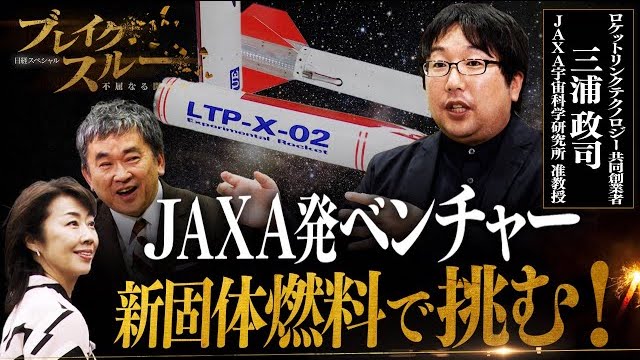TOKYO, Jul 22 (News On Japan) - Japan's space business, predicted to grow into a 200 trillion yen industry, is on the cusp of innovation as global competition intensifies.

Associate Professor Masashi Miura from the JAXA Institute of Space and Astronautical Science, who founded the JAXA-affiliated venture Rocket Link Technology last year, is spearheading the development of cost-effective rockets by incorporating groundbreaking technology into solid rocket fuel. With tens of thousands of satellite launches planned worldwide, can Miura's vision for Japan's space development spark a revolution? Novelist Jin Mayama delves into Miura's aspirations for the future of Japan's space industry.
This time, Mayama explores a passionate pioneer in space development. After a 40-year gap, Miura is tackling a project through a JAXA-born venture. He’s a fascinating character, and I hope everyone enjoys reading about him. Renowned for his economic novels and diverse human dramas, novelist Mayama gets up close with pioneers shaping the future.
Fifty-five years ago today, Apollo 11 made history by landing on the moon. Half a century later, the world has entered a new era of space development, with private companies joining the fray and competition intensifying. The market is projected to grow to 200 trillion yen. What does the future hold for Japan?
For many, space projects may seem like a waste, often sparking debates on the potential benefits. However, beyond national projects, the space industry as a commercial venture is gaining momentum in Japan, thanks to emerging start-ups like Rocket Link Technology.
Rocket Link Technology, led by Miura, focuses on solid rocket fuel, a key technology for rockets. Miura, also an associate professor at the JAXA Institute of Space and Astronautical Science in Sagamihara, Kanagawa Prefecture, has overseen various cutting-edge projects, including the Hayabusa2 asteroid explorer, which successfully returned samples from the asteroid Ryugu to Earth. Next to Hayabusa2 in the institute is the unmanned probe SLIM, which achieved Japan's first successful moon landing earlier this year.
Miura explains the significance of solid rocket fuel: "It burns rapidly, providing a powerful thrust essential for launches. Japan has been a leader in solid rocket fuel technology since the Pencil Rocket era, and we continue to develop world-class capabilities."
Global space competition is fierce. Last year, India succeeded in landing a probe on the moon ahead of Japan. China, too, made headlines by landing a probe on the far side of the moon and returning samples to Earth, a world first. Meanwhile, established space powers like the United States and Russia have long been investing heavily in space exploration. Miura emphasizes the budgetary constraints Japan faces, with limited funding compared to other nations. While other countries have industrialized their space endeavors, Japan is still catching up.
In this context, Miura and his team at Rocket Link Technology are working to transform Japan’s space industry. Their breakthrough technology, imbued with JAXA’s pioneering spirit, aims to make a significant impact on the global stage.
Source: テレ東BIZ














